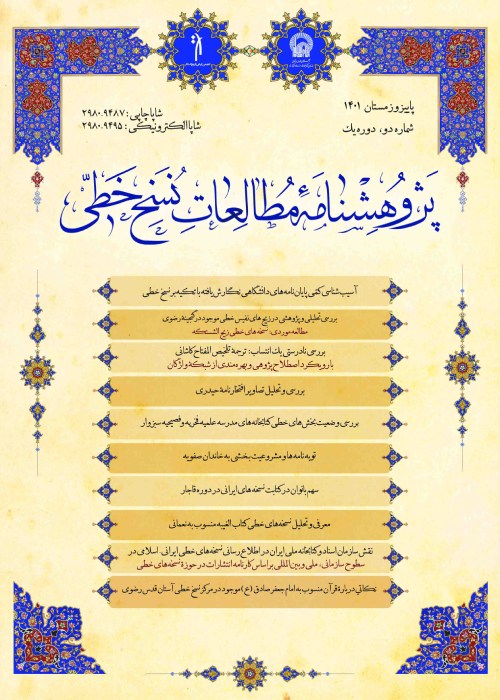Semantic Analysis of the Animal Motifs Used in Holy Books, Case Study: The Amida Gospel of the Walters Art Museum
"Amida Gospel" is one of the prominent examples of Armenian Holy Bible book design, whose ornaments enjoy a significant visual and meaningful variety and quality. This research tries to examine the ornamental animal motifs and their semantic analysis in the Amida Gospel of the Walters Art Museum. The focus of this article is on paying special attention to book design and the concepts hidden within the ornamental animal species and its images in the form of the Amida Gospel of the 17th century.
Research Method/Approach:
This research was conducted in a descriptive-analytical procedure and its data was collected by a library method and from documents available in the archives of libraries and museums.
The animals employed in the motifs are categorized in four groups of birds, quadrupeds and mammals, reptiles and aquatics, and combined creatures. Each of the motifs used in the Amida Gospel, as a Christian symbol, refers to a previous concept or element. Birds are mostly a symbol of heavenly concepts and a mediator between the material and spiritual worlds. Quadrupeds are considered more and reptiles and aquatic animals less as symbols of saints, people, and human and worldly characteristics; and in some cases they also refer to the stories and events that happened to humans in the Gospel. It seems that the image of the combined animals was more influenced by mythological teachings and has been without religious background. In terms of technique, Amida Gospel is a combination of both ways of illustrating Armenian manuscripts, that is, Vaspurakan and Cilicia schools, both of which traveled along together, were influenced from each other, and at some points joined together. In Christianity, pictures and motifs are considered as pictorial alphabets to the followers of this religion so that all classes of society, even the illiterate, can read the Gospel through pictures. Christian artists have used all their art to describe the stories and rituals of Christ’s life and to show the spirituality of these stories and, by distancing from Greek and Roman naturalism, they have proceeded to drawing, designing and coloring human, animal, and floral figures and other ornamental elements without shading and volume processing so as to deny everything that refers to this material and earthly world and thereby to be able to show the spiritual world as superior to the material world.
- حق عضویت دریافتی صرف حمایت از نشریات عضو و نگهداری، تکمیل و توسعه مگیران میشود.
- پرداخت حق اشتراک و دانلود مقالات اجازه بازنشر آن در سایر رسانههای چاپی و دیجیتال را به کاربر نمیدهد.





